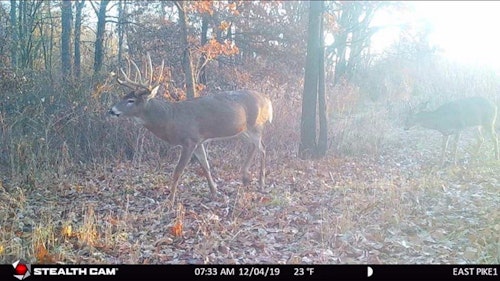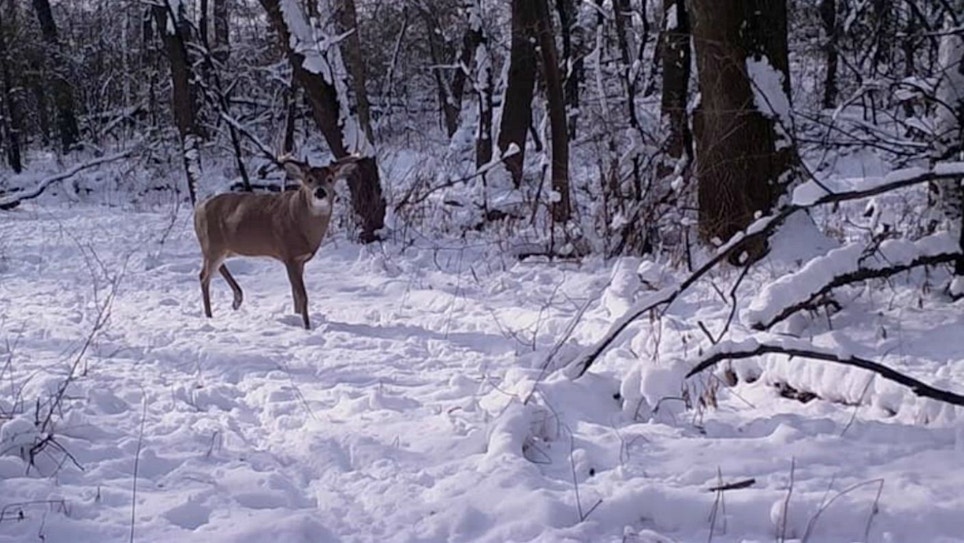Every time I go to the field to chase the wily whitetail, I learn something. It might be something small, such as simply noting a slight difference in wind direction at an old stand. Or it might be something big, important even, like realizing a buck I hunted the previous year is now in a new area. I’m sure you’ve also found that no matter how many years you’ve hunted, learning is a constant.
Learning takes place through personal experience, talking to other hunters and from reading, whether it’s simply a hunting story or scientifically based material, which is exactly what you get here in this column in every issue. No matter how you gather new information, the fact is you are constantly learning about whitetails — that should never stop. Furthermore, learning is an ongoing process, each nugget of data, builds on the subsequent nugget … and so on.
Whitetail behavior is the same now as it always has been. However, we now know much more about deer behavior in general. A prime example of that knowledge explosion is what we’ve learned about buck movement during the past 40 years. The following is a synopsis.
Dispersal of Yearling Bucks
In the 1970s, research showed that some yearling bucks dispersed from their birthing area. More recent studies pin that down even more. For example, in a recent Pennsylvania research project, 75 percent of button bucks studied left their birth place. Half of them did so in May, the other half in September or October. In forested areas they moved approximately 5 miles, but a few trucked off as far as 12 miles. In farm country, the dispersal distance was even farther.
The point is that over half the button bucks you see this fall won’t be there next hunting season. That doesn’t mean your area will become depleted of bucks, because as your bucks leave, others from afar travel into your area. Yes, a number of the yearling bucks you start seeing in bow season, came from somewhere else.
Therefore, it’s also possible the dispersal of bucks to and from your hunting area means that culling inferior-antlered bucks likely won’t improve antler size. Why? Because you’ve got a bunch of young bucks moving to your property every year, bringing genetics from surrounding areas. That may be a bad thing; then again, it may be a good thing.
Mature Bucks Wander
Dispersal isn’t the only type of buck movement we’ve learned about in relatively recent years. We’ve known for years that bucks leave their home range for short periods to chase does, look for food, explore, etc. However, the first conclusive study on “excursions” (defined as a significant move from the home range, followed with a return within a short time) was published in 2007, finding that some bucks left their home range, traveled a mile or so, and then returned within a half-day. That particular Maryland study showed that about half of all mature bucks (2.5 years old and older) make these excursions during pre-breeding and breeding season.
Other research within the study showed that about 15 to 20 percent of mature bucks that go on excursions never returned home. If you were hunting a good buck and he suddenly disappeared, he may still be alive, but he has moved out of town. And still further research showed that some bucks take long trips, stay a year, and then returned. You hunted him as a 2.5-year-old, then he disappeared the next year, and suddenly he is back as a 4.5-year-old. It happens, and it shows the challenges of hunting. It also shows the huge increase in knowledge we have compiled on buck movement in recent years.
Importance of the Core
Around 2005, researchers began reporting on what they referred to as a buck’s “core” area. This is the area within the home range where the buck spends 50 percent or more of his time. Data was collected using Global Positioning Systems on older bucks fitted with radio collars. Home ranges and associated core areas vary depending on habitat, but normally included bedding and feeding areas.
The study provided the following data: In Texas, the home ranges averaged 2,271 acres with core areas just 224 acres. In Maryland, the home ranges averaged 740 acres with the core area only 100 acres. In Pennsylvania, the home ranges averaged 323 acres, but the core area was only 66 acres. Home ranges, including the core areas, changes size during the year, too. But in one Maryland study, the core area was never over 14 percent of the home range. Hence, a good rule of thumb for deer in the Northeast (and maybe into the Midwest) is that bucks spend half their time in an area around 15 percent the size of their entire home range.
Obviously, locating a buck’s core area can aid in planning a hunting strategy for nailing that buck. Still, hunters can’t find core areas by putting radio collars on bucks, but they can put out trail cameras. While trail cameras are great, nothing beats pounding the brush, especially during winter and early spring when there is snow on the ground. Done discretely, you can pinpoint the core area of bucks rather easily. Once identified, and now knowing where he spends most of his time (the core area), you can place stands.
Of course there are a ton of other variables, one being that come fall, foods change and the core and home range may change as well. And, once that buck starts chasing does, all bets are off. He just won’t be in his core area much. However, he may be in an identifiable second home range.

Bucks With Two Home Ranges
The challenges never end. You’ve patterned a target buck, got your pre-rut stands set accordingly and suddenly he’s spotted in an entirely new area. More recent research shows that some bucks have two core areas within their home range. We now know that some bucks have two home ranges. For example, a 6.5-year-old Maryland buck had two home ranges that were 3.3 miles apart. It’s possible to spot the same buck in two completely separate areas, he just might be spending a few days at a time in two different home ranges. For sure, those two-home-range bucks will challenge the hunter.
All Bucks Are Individuals
To top it off, the fact is that bucks have individual personalities — just like people. Some don’t move around much in their home range, while others move a lot. In the study mentioned previously, bucks in South Texas moved 7 to 15 miles a day during the rut, while bucks in Maryland moved only 1.5 to 3 miles a day.
Bucks Are a Moving Target
Knowing that bucks have a core area is one example of knowledge important to the hunter. However, research didn’t show that bucks use funnels when they move within that core. Hunters found that out utilizing that knowledge all the time. Research didn’t show that rub lines can be a great place to locate a stand in a buck’s core area. Hunters found that out and some big bucks have been taken on or near rub lines.
It’s a given that you want to be in the field when bucks are most active. You also want to learn as much as you can about the individual bucks you are hunting. Researchers continue to learn about buck movement all the time. One thing is for sure, over the coming years we’ll learn more about deer movement behavior. That information will translate into modifying your hunting strategies. It’s a continually moving target, but that just makes success all the sweeter.






